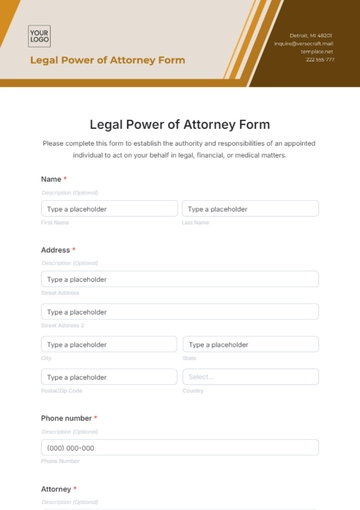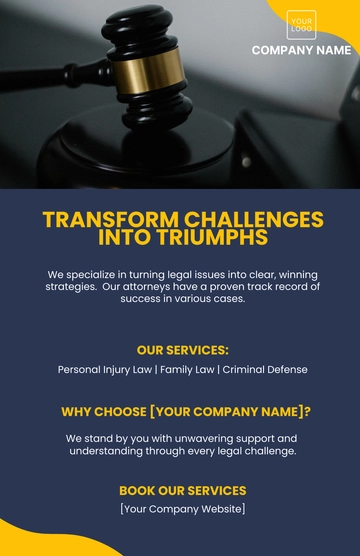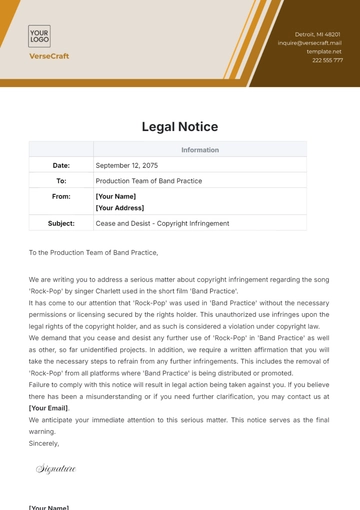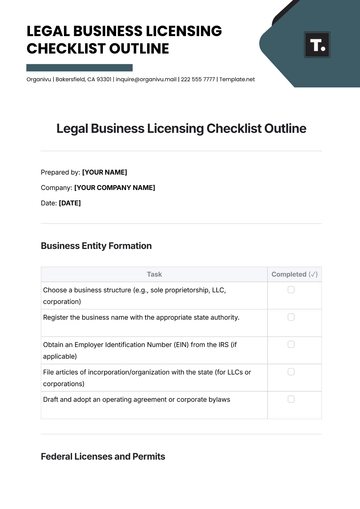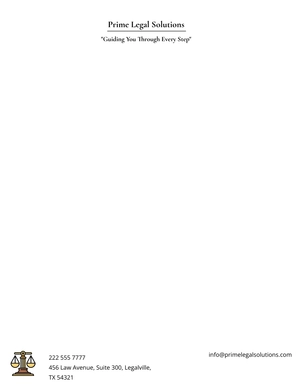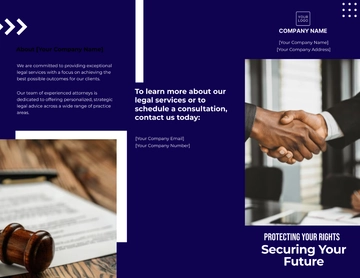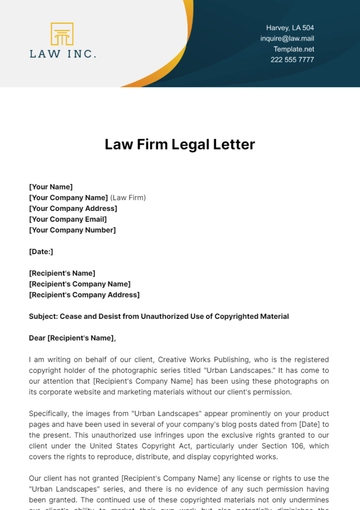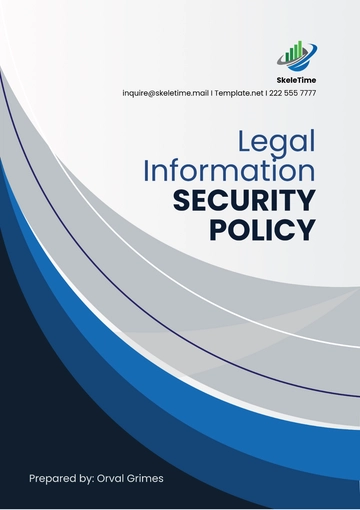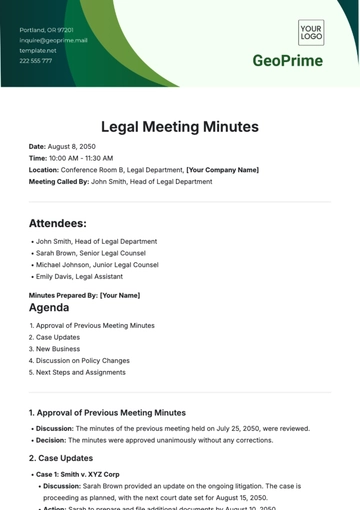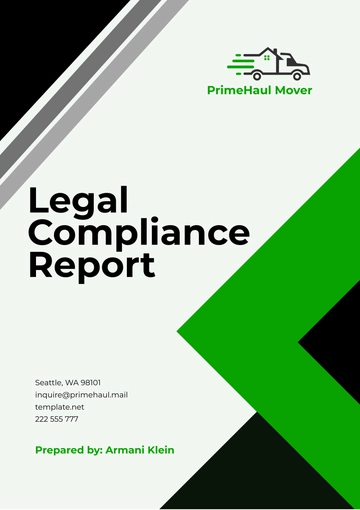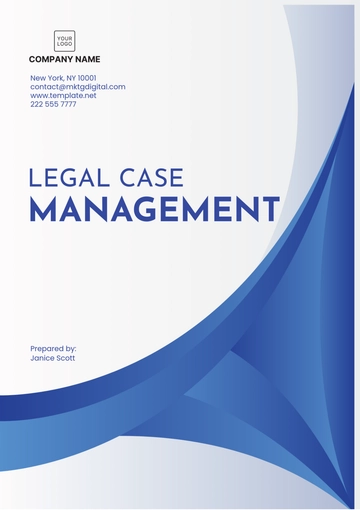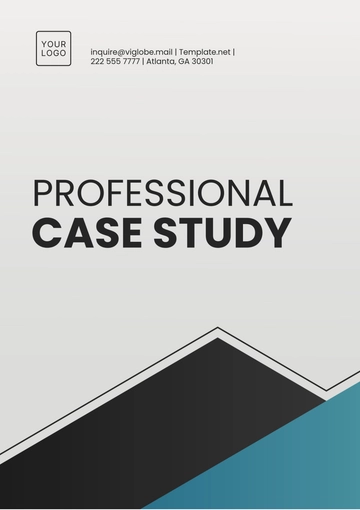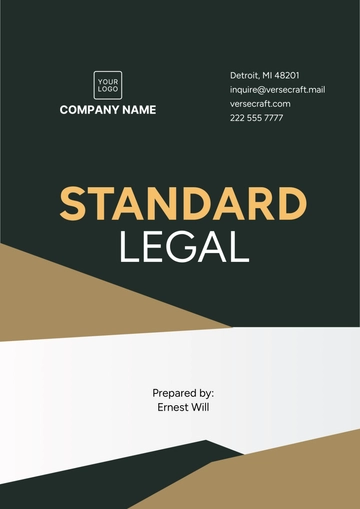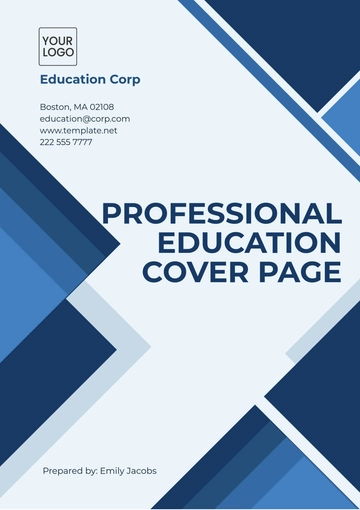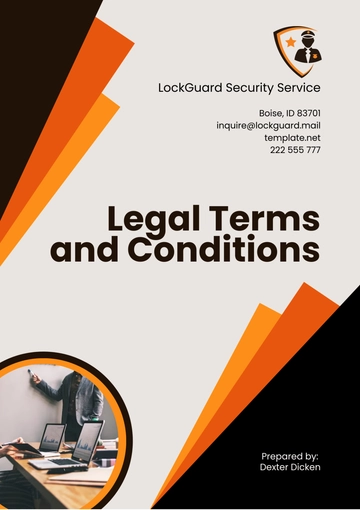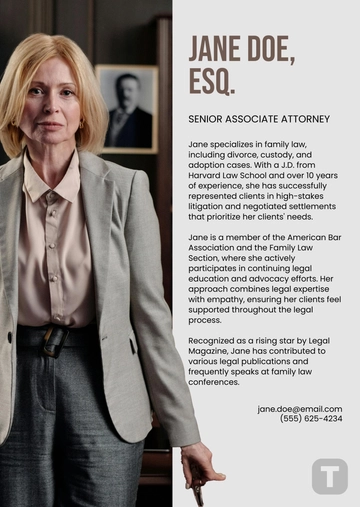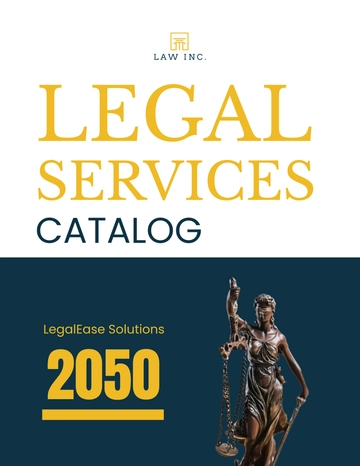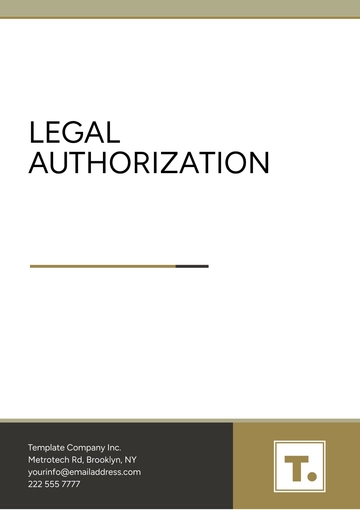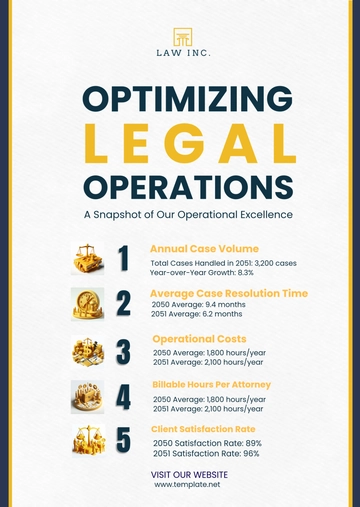Free Law Firm Client Management Guide
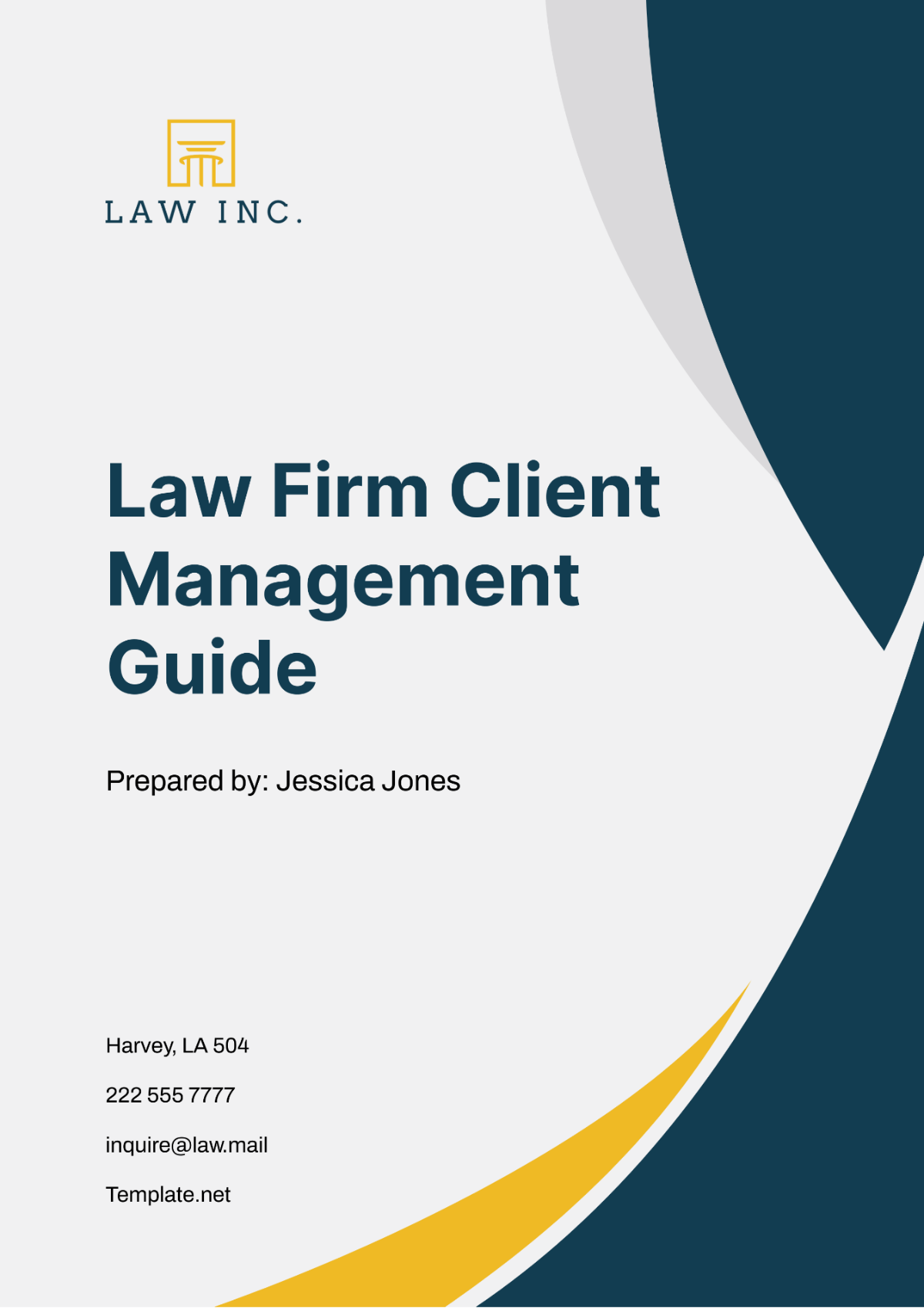
I. Introduction
A. Objectives of the Guide
Client-Centric Approach: The primary objective of this guide is to ensure a client-centric approach in all our dealings. This means that we aim to put our clients’ needs and interests at the forefront of our services. It’s about understanding our clients’ goals, expectations, and concerns, and tailoring our services to meet those needs.
Standardization of Processes: Another key objective of this guide is to standardize the client management processes across the firm. This is to ensure consistency and efficiency in our services. By having a standardized process, we can ensure that every client receives the same high level of service, regardless of who they interact with at our firm.
Quality Assurance: By following the guidelines outlined in this document, we aim to maintain the highest quality of legal services provided to our clients. This guide serves as a benchmark for quality, and adherence to it ensures that we meet the high standards that our clients expect from us.
Ethical Compliance: This guide also serves to reinforce the importance of ethical conduct in our interactions with clients. It reminds us of our duty to act in the best interests of our clients, maintain confidentiality, and avoid conflicts of interest.
Continuous Improvement: Lastly, this guide is a living document. We aim to continuously improve our processes based on feedback and evolving best practices. This ensures that our client management practices remain relevant and effective.
B. Scope of the Guide
Applicability: This guide applies to all attorneys, paralegals, and support staff within [Your Company Name]. It serves as a reference for everyone in the firm, ensuring that everyone understands their roles and responsibilities in managing client relationships.
Comprehensive Coverage: The guide covers all aspects of client management, from initial consultation and onboarding to case management and closure. It provides a step-by-step process for each stage of the client relationship, ensuring that nothing is overlooked.
Ethics and Professional Responsibility: The guide also covers the ethical and professional responsibilities of our staff towards our clients. It serves as a reminder of our duty to act in the best interests of our clients, maintain confidentiality, and avoid conflicts of interest.
Limitations: While this guide provides a comprehensive framework for client management, it is not exhaustive. Staff members are encouraged to use their professional judgment in situations not covered by this guide. They should also be aware of the need to stay updated with changes in the law and professional standards.
C. Importance of the Guide
Client Satisfaction: Effective client management is key to client satisfaction. This guide provides the tools and processes to ensure we meet and exceed our clients’ expectations. By following the guidelines in this guide, we can build strong, lasting relationships with our clients.
Efficiency: By standardizing our processes, we can work more efficiently, reducing the likelihood of errors and omissions. This not only improves the quality of our services but also allows us to serve our clients more effectively.
Professionalism: This guide reinforces our commitment to professionalism and ethical conduct, enhancing our reputation in the legal community. It serves as a reminder of our duty to act in the best interests of our clients, maintain confidentiality, and avoid conflicts of interest.
Continuous Improvement: This guide serves as a basis for continuous improvement, allowing us to adapt and evolve our processes in response to feedback and changing circumstances. This ensures that our client management practices remain relevant and effective.
Legal Compliance: Lastly, this guide helps ensure that we comply with all relevant legal and ethical standards in our client interactions. It serves as a reminder of our duty to act in accordance with the law and professional standards.
II. Client Onboarding
A. Initial Consultation
Understanding Client Needs: The initial consultation is the first step in understanding the client’s needs and expectations. It’s an opportunity for us to learn about the client’s legal issue, their goals, and their expectations from us as their legal counsel. It’s also a chance for us to explain how we can help and what our services entail.
Establishing Rapport: The initial consultation is also about establishing rapport with the client. We strive to create a comfortable environment where the client feels heard and understood. This helps build trust and lays the foundation for a successful attorney-client relationship.
Assessing the Case: During the initial consultation, we assess the merits of the case. This involves reviewing any relevant documents, understanding the facts, and identifying potential legal strategies. This assessment helps us determine whether we can provide effective representation.
Discussing Fees and Costs: The initial consultation is also when we discuss our fees and costs. We believe in transparency and make sure our clients understand our billing practices and what they can expect to pay for our services.
Next Steps: At the end of the initial consultation, we discuss the next steps. If the client decides to engage our services, we explain the onboarding process, which includes a conflict check and the signing of an engagement letter.
B. Conflict Check
Importance of Conflict Check: Before we can represent a client, we must conduct a conflict check. This is an essential step to ensure that our representation of the client does not conflict with our duties to our existing clients.
Process of Conflict Check: Our conflict check involves a thorough review of our firm’s client database. We look for any potential conflicts of interest, such as representing another party in the same matter or having a significant relationship with a party adverse to the potential client.
Addressing Conflicts: If a potential conflict is identified, we take steps to address it. This may involve obtaining informed consent from all affected parties or declining representation if the conflict cannot be resolved.
Confidentiality: All information obtained during the conflict check is kept confidential. This is in line with our ethical obligations and our commitment to protecting client privacy.
C. Engagement Letter
Purpose of the Engagement Letter: The engagement letter is a crucial document that establishes the attorney-client relationship. It outlines the scope of our services, our fees, and our mutual responsibilities. This document serves as a contract between our firm and the client, ensuring that both parties have a clear understanding of what to expect.
Contents of the Engagement Letter: Our engagement letter typically includes details about the nature of the legal services we will provide, our fee structure, the responsibilities of the client, confidentiality provisions, and terms for termination of the relationship. It’s designed to provide a comprehensive overview of our agreement with the client.
Signing the Engagement Letter: Once the client has had a chance to review the engagement letter, we ask them to sign it. This formalizes our attorney-client relationship and allows us to start working on their case. We encourage clients to ask questions and make sure they fully understand the terms before signing.
D. Client Intake Form
Purpose of the Client Intake Form: The client intake form is a critical document that collects essential information about the client and their legal issue. This information helps us understand the client’s situation better and provide more effective legal advice.
Contents of the Client Intake Form: Our client intake form typically includes sections for personal information, contact details, and specifics about the legal issue. It may also include questions about the client’s legal history and their expectations from our services.
Confidentiality of Information: We assure clients that all information provided in the intake form is kept confidential and used solely for the purpose of providing legal services. We adhere to strict data privacy standards to protect our clients’ information.
Importance of Accurate Information: We emphasize to clients the importance of providing accurate and complete information in the intake form. This ensures that we have a clear and comprehensive understanding of their situation, which is crucial for effective representation.
Next Steps: After the client completes the intake form, we review the information and discuss the next steps. This may include drafting an engagement letter, planning a legal strategy, or scheduling further consultations.
III. Communication with Clients
A. Regular Updates
Importance of Regular Updates: Regular updates are crucial in maintaining transparency and trust in the attorney-client relationship. They ensure that the client is always aware of the progress of their case and any significant developments.
Content of Updates: Our updates typically include the current status of the case, any recent actions taken, upcoming deadlines or court dates, and any new information that may affect the case. We strive to make these updates as comprehensive and understandable as possible.
Frequency of Updates: The frequency of updates may vary depending on the nature of the case and the client’s preferences. However, we aim to provide updates at least once a month, or more frequently for complex or fast-moving cases.
Methods of Delivery: We deliver updates through the client’s preferred method of communication, whether that’s email, phone calls, or in-person meetings. We ensure that our updates are timely, clear, and secure.
Client Response: We encourage clients to respond to our updates with any questions or concerns they may have. This two-way communication ensures that we are meeting the client’s needs and expectations.
B. Responding to Inquiries
Commitment to Responsiveness: We are committed to responding to client inquiries promptly and thoroughly. We understand that our clients may have questions or concerns, and we strive to address these as quickly as possible.
Scope of Inquiries: Client inquiries may range from questions about their case, to billing issues, to requests for legal advice. Regardless of the nature of the inquiry, we ensure that it is addressed by the appropriate person in our firm.
Timeliness of Responses: We aim to respond to all client inquiries within one business day. For more complex inquiries that require additional research or consultation, we provide an initial response acknowledging the inquiry and providing a timeline for a full response.
Quality of Responses: We strive to provide clear, accurate, and comprehensive responses to all inquiries. We avoid legal jargon and explain things in a way that the client can easily understand.
Follow-Up: After responding to an inquiry, we follow up with the client to ensure that they understood our response and to answer any further questions they may have.
C. Confidentiality
Commitment to Confidentiality: We are committed to maintaining the confidentiality of all client communications. We understand the sensitive nature of legal matters and respect our clients’ privacy.
Scope of Confidentiality: Our duty of confidentiality covers all information relating to the representation of the client, regardless of the source of the information or whether the client requested it to be kept confidential.
Protection of Information: We have robust systems in place to protect client information from unauthorized access, disclosure, alteration, or destruction. This includes physical security measures, such as secure filing systems, and digital security measures, such as encryption and secure networks.
Disclosure of Information: We only disclose client information with the client’s informed consent, or as required by law or court order. We always inform the client before disclosing their information and discuss any potential implications.
Continuing Duty: Our duty of confidentiality continues even after the attorney-client relationship has ended. We retain client records securely and continue to protect the confidentiality of the client’s information.
IV. Case Management
A. Case Tracking
Effective case tracking is crucial for managing the workload in a law firm and ensuring that all cases are handled efficiently and effectively. It involves keeping track of all active cases, their current status, upcoming deadlines, and any important notes or updates. The following table outlines our case tracking process:
No. | Step | Details |
|---|---|---|
1 | Case Assignment | Each case is assigned to a specific attorney or team within the firm. |
2 | Status Updates | Regular updates are made to each case’s status as it progresses. |
3 | Deadline Tracking | All upcoming deadlines are tracked and reminders are set. |
4 | Note Taking | Any important notes or updates related to the case are recorded. |
5 | Review | Regular reviews are conducted to ensure all cases are progressing as expected. |
Effective case tracking is crucial for maintaining transparency and trust in the attorney-client relationship. It ensures that the client is always aware of the progress of their case and any significant developments. This not only helps us provide better service to our clients but also improves our productivity and efficiency as a firm.
Moreover, case tracking allows us to anticipate potential issues and address them proactively. For example, if a case is not progressing as expected, we can identify the issue and take corrective action early. This proactive approach can often prevent minor issues from becoming major problems.
Finally, case tracking provides us with valuable data that can be used to improve our services. By analyzing our case data, we can identify trends, measure our performance, and make informed decisions about resource allocation and process improvements. This data-driven approach helps us continuously improve our services and deliver better results for our clients.
B. Document Management
Effective document management is a critical aspect of case management in a law firm. It involves organizing, storing, and tracking all documents related to a case. The following table outlines our document management process:
No. | Step | Details |
|---|---|---|
1 | Document Collection | We collect all relevant documents from the client and other sources. |
2 | Document Review | Each document is reviewed for relevance and importance to the case. |
3 | Document Organization | Documents are organized in a logical manner, making it easy to locate specific documents when needed. |
4 | Document Storage | All documents are stored securely, with digital documents backed up regularly. |
5 | Document Tracking | We keep track of all documents, noting any changes or additions over time. |
Effective document management ensures that all relevant documents for a case are easily accessible, which can significantly improve efficiency and productivity. Moreover, it reduces the risk of losing or misplacing important documents, which can have serious implications for a case.
Furthermore, document management is not just about organization and storage. It also involves reviewing and understanding the contents of the documents. This can provide valuable insights into the case and inform the legal strategy.
Lastly, effective document management also has implications for client service. By being able to quickly and easily access documents, we can provide better service to our clients. For example, if a client has a question about a document, we can quickly locate that document and provide the client with the information they need.
V. Client Satisfaction
A. Regular Feedback
Importance of Feedback: Regular feedback from clients is crucial for our continuous improvement. It helps us understand what we are doing well and where we can improve. We value our clients’ opinions and strive to meet their expectations.
Methods of Collecting Feedback: We collect feedback through various methods, including feedback forms, surveys, and direct conversations. We aim to make the feedback process as easy and convenient as possible for our clients.
Responding to Feedback: We take all feedback seriously and respond promptly. We thank clients for their feedback, address any issues raised, and take action to improve our services.
Learning from Feedback: We analyze the feedback we receive to identify trends and areas for improvement. This analysis informs our strategic planning and helps us continuously improve our services.
Confidentiality: All feedback is treated confidentially. We respect our clients’ privacy and use their feedback solely for the purpose of improving our services.
B. Dispute Resolution
Dispute resolution is a critical aspect of client satisfaction. It’s important to have a clear and fair process for resolving any disputes that may arise during the course of our representation. The following table outlines our dispute resolution process:
No. | Step | Details |
|---|---|---|
1 | Issue Identification | The client raises a concern or issue. |
2 | Investigation | Our firm will review the concern and gather necessary information. |
3 | Discussion | We will discuss the issue with the client and explore possible solutions. |
4 | Third-Party Involvement | If necessary, we will involve a neutral third party (such as a mediator) to facilitate resolution. |
5 | Resolution Implementation | We will implement the agreed-upon solution and follow up with the client to ensure their satisfaction. |
Having a structured dispute resolution is crucial. It provides a clear pathway for addressing and resolving issues that may arise in the course of our representation. This not only helps maintain a positive attorney-client relationship but also ensures that our clients feel heard and valued.
Additionally, by having a structured process, we can ensure that disputes are handled consistently and fairly. This contributes to our firm’s reputation for professionalism and integrity. It also provides our clients with the assurance that their concerns will be addressed promptly and effectively.
Overall, an effective dispute resolution process can help prevent minor issues from escalating into major problems. By addressing concerns early and proactively, we can often resolve issues before they impact our representation or our client’s satisfaction. This proactive approach is part of our commitment to providing excellent service to our clients.
C. Closing the Case
End of Representation: When our representation of a client comes to an end, we ensure that the case is closed in a thorough and professional manner. This includes finalizing any outstanding matters, providing the client with a closing letter, and returning any original documents.
Final Billing: We provide the client with a final bill that clearly details all outstanding fees and expenses. We discuss the bill with the client and address any questions or concerns they may have.
Client Satisfaction Survey: After closing the case, we ask the client to complete a satisfaction survey. This gives the client an opportunity to provide feedback on our services and helps us identify areas for improvement.
Retention of Records: We retain a copy of the client’s file for a certain period, in accordance with our record retention policy and legal requirements. We inform the client of this policy and assure them that their records will be kept confidential and secure.
Continuing Relationship: Even after a case is closed, we value our relationship with the client. We encourage clients to contact us if they have any future legal needs or questions.
VI. Ethics and Professional Responsibility
A. Confidentiality and Privilege
Understanding Confidentiality: Confidentiality is a fundamental aspect of the attorney-client relationship. It ensures that information shared by the client with their attorney is kept private and not disclosed to others without the client’s consent.
Importance of Confidentiality: Maintaining confidentiality is crucial for building trust with clients. It allows clients to speak openly about their legal issues, safe in the knowledge that their information will not be disclosed.
Attorney-Client Privilege: Attorney-client privilege is a legal principle that protects communications between a client and their attorney from being disclosed. It is a key aspect of ensuring confidentiality.
Exceptions to Confidentiality: While confidentiality is a fundamental principle, there are certain exceptions where disclosure is permitted or required by law. These exceptions are limited and specific, and clients are informed about them.
Maintaining Confidentiality: We have robust systems and procedures in place to protect client information. This includes secure storage of files, encrypted communications, and training for all staff on confidentiality obligations.
B. Conflict of Interest
Understanding Conflict of Interest: A conflict of interest occurs when an attorney’s duty to one client is compromised by their duty to another client, their own interests, or the interests of their law firm.
Identifying Conflicts of Interest: We have a rigorous process in place to identify potential conflicts of interest before taking on a new client or case. This includes a thorough review of our client database and consultation among our team.
Managing Conflicts of Interest: If a potential conflict of interest is identified, we take steps to manage it. This may involve obtaining informed consent from all affected parties, implementing information barriers, or declining to act if the conflict cannot be managed.
Ongoing Monitoring: We monitor for conflicts of interest throughout our representation of a client. If a new conflict arises, we take immediate steps to manage it.
Training and Compliance: All our staff receive regular training on identifying and managing conflicts of interest. We also have a compliance team that oversees our conflict management procedures.
C. Competence and Legal Advice
Duty of Competence: As attorneys, we have a duty to provide competent representation to our clients. This means having the legal knowledge, skill, thoroughness, and preparation reasonably necessary for the representation.
Providing Legal Advice: We provide legal advice that is accurate, relevant, and tailored to the client’s specific circumstances. We take the time to understand the client’s situation and objectives before providing advice.
Continuing Legal Education: We are committed to ongoing professional development to maintain and enhance our legal knowledge and skills. This includes regular training, attendance at seminars and conferences, and staying up-to-date with changes in the law.
Referral to Specialists: If a client’s case requires specialist knowledge that we do not have, we refer the client to a suitable specialist. We have a network of trusted professionals to whom we can refer clients.
Quality Assurance: We have quality assurance procedures in place to ensure that our legal advice meets the highest standards. This includes peer review, client feedback, and regular audits of our work.
VII. Continuing Relationship
A. Follow-ups
Importance of Follow-ups: Follow-ups are an integral part of maintaining a continuing relationship with our clients. They allow us to check in with our clients, update them on any relevant legal developments, and remind them of our ongoing commitment to their legal needs.
Timing of Follow-ups: We typically schedule follow-ups at regular intervals after the conclusion of a case. The timing can vary depending on the nature of the case and the client’s preferences.
Content of Follow-ups: Our follow-ups may include updates on relevant legal developments, reminders about important dates or obligations, and information about our firm’s services that may be of interest to the client.
Method of Follow-ups: We conduct follow-ups through the client’s preferred method of communication, whether that’s email, phone calls, or in-person meetings.
Response to Follow-ups: We encourage clients to respond to our follow-ups with any questions or concerns they may have. We are always here to assist them with their legal needs.
B. Referrals
Value of Referrals: Referrals are a valuable source of new clients for our firm. We appreciate when our clients refer their friends, family, or colleagues to us for their legal needs.
Requesting Referrals: We may occasionally ask our clients if they know anyone who could benefit from our services. We always do this in a respectful and non-intrusive manner.
Handling Referrals: When we receive a referral, we handle it with the same care and diligence as any other potential client. We conduct a conflict check, schedule an initial consultation, and follow our standard onboarding process.
Appreciation for Referrals: We express our appreciation to clients who refer others to us. This may include a thank you note or a small token of appreciation.
Confidentiality of Referrals: We maintain the confidentiality of all referrals. We do not disclose who referred a client to us without the referrer’s consent.
C. Ongoing Services
Availability of Ongoing Services: Even after a case is closed, we remain available to assist our clients with their ongoing legal needs. This may include providing legal advice, assisting with related matters, or representing them in new cases.
Scope of Ongoing Services: Our ongoing services cover a wide range of legal areas. We strive to be a one-stop shop for our clients’ legal needs.
Engagement for Ongoing Services: If a client requires our services for a new matter, we will issue a new engagement letter. This ensures that the scope of our representation is clear and that we have the client’s informed consent.
Billing for Ongoing Services: Our billing for ongoing services follows the same transparent and fair practices as for our initial representation. We discuss our fees upfront and provide regular billing updates.
Quality of Ongoing Services: We are committed to providing the same high quality of service for ongoing matters as for our initial representation. We continuously strive to exceed our clients’ expectations and deliver excellent legal results.
VIII. Conclusion
This Client Management Guide of [Your Company Name] is designed to provide a comprehensive framework for managing client relationships effectively and ethically. It covers all aspects of client management, from initial consultation and onboarding, through case management and communication, to maintaining a continuing relationship after the conclusion of a case. By following the guidelines outlined in this document, we aim to deliver high-quality legal services that meet and exceed our clients’ expectations.
This guide is not just a set of procedures; it’s a reflection of our firm’s values and commitment to our clients. We believe in putting our clients’ needs first, acting with integrity and professionalism, and continuously striving to improve. We understand that the attorney-client relationship is built on trust, and we work hard to earn and maintain that trust through every interaction.
However, it’s important to remember that this guide is a living document. The legal profession is constantly evolving, and so are our clients’ needs. Therefore, we are committed to regularly reviewing and updating this guide to ensure it remains relevant and effective. We also encourage feedback from our clients and our team to help us improve. After all, our ultimate goal is to provide the best possible service to our clients, and this guide is a crucial tool in achieving that goal.
- 100% Customizable, free editor
- Access 1 Million+ Templates, photo’s & graphics
- Download or share as a template
- Click and replace photos, graphics, text, backgrounds
- Resize, crop, AI write & more
- Access advanced editor
Elevate client management practices with the Law Firm Client Management Guide Template only on Template.net! This invaluable and editable resource provides a comprehensive guide for nurturing client relationships and driving satisfaction. With its customizable format and the AI Editor Tool, you can customize it to align with your firm's needs!
